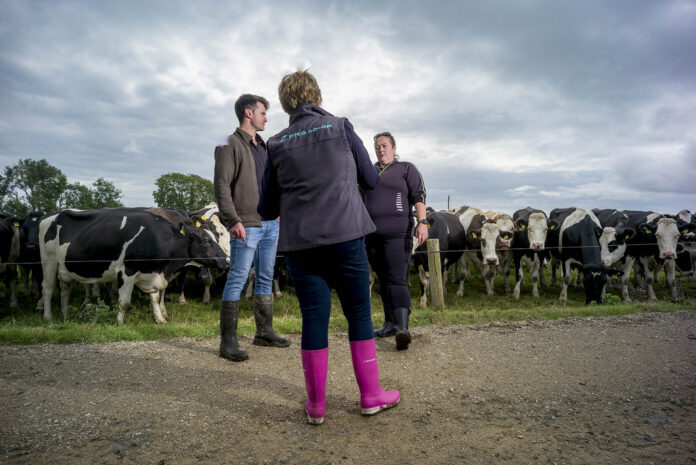
Spring milk volumes increased strongly in the last two weeks on Cork farms thanks to a surge in grass growth on the back of rising temperatures, the latest ‘Calving Insights’ survey from FRS Co-Op has found.
A survey of FRS Co-Op operators working on farms around Cork shows that dairy farmers in the Rebel County have had to grapple with weak grass growth for most of March, despite the dry weather and excellent grazing conditions.
However, with temperatures rising in the last 10 days, grass growth has picked up significantly across the country, leading to a pickup in milk solids production.
Overall, the latest ‘Calving Insights’ survey shows that spring calving is now more than 90% complete on average across the county by the first week of April.
While the 2025 calving season has progressed smoothly with no major animal health issues, FRS Co-Op operators based in Cork report that weak grass growth levels for most of March forced many farmers to increase concentrate levels and feed silage by night to bolster early milk volumes.
However, the warmer weather of the past 10 days has injected real momentum to grass growth, and production levels on dairy farms are beginning to take off.
Ronan Skelly, farm services manager at FRS Co-Op, said: “Compared to the weather conditions which defined last year’s calving season, spring 2025 couldn’t have been any different. The dry weather for most of this spring has translated into a smooth calving season with no major animal health problems on farms around the country.”
“The latest FRS Co-Op Calving Insights survey reveals that the improved weather conditions have also translated into a strong improvement in milk production levels this spring. In Cork, farm operators are reporting milk production volumes are up as much as 10% compared to last year, which is a welcome start to the 2025 milking season for farmers.
“Overall, with the spring calving season now almost over with 90% of cows calved on average across the country, farmers will be turning their attention to the breeding season and the final fertiliser allocations ahead of first cut silage.”







